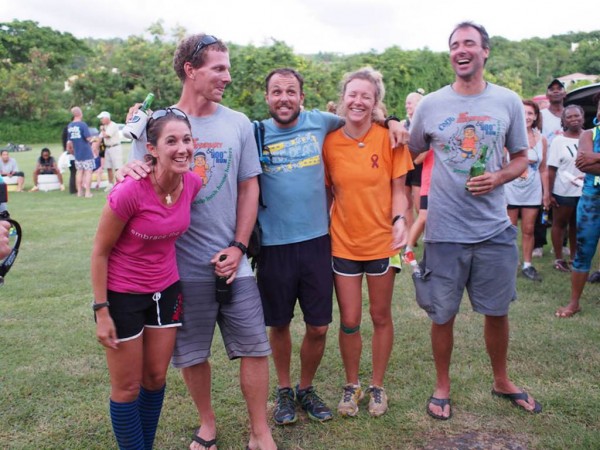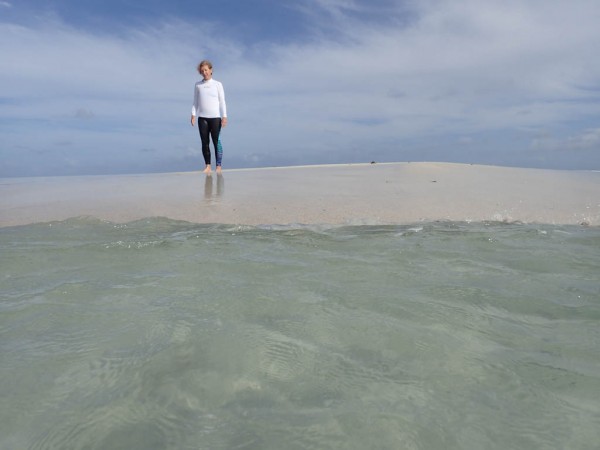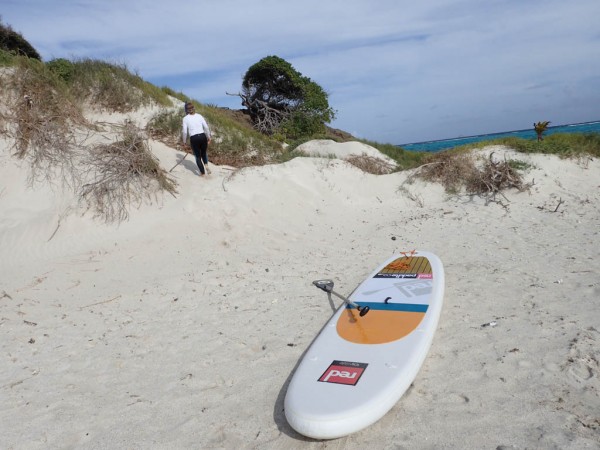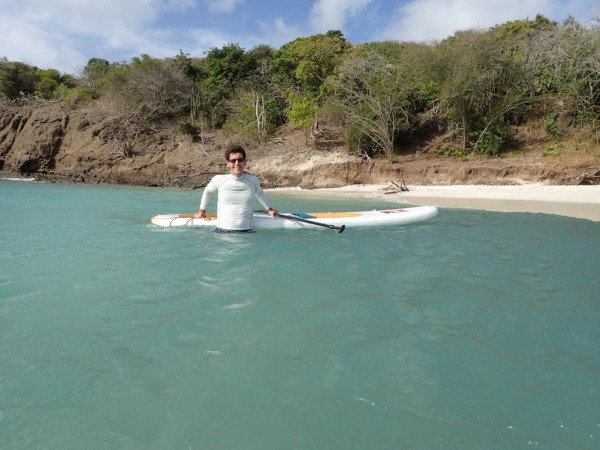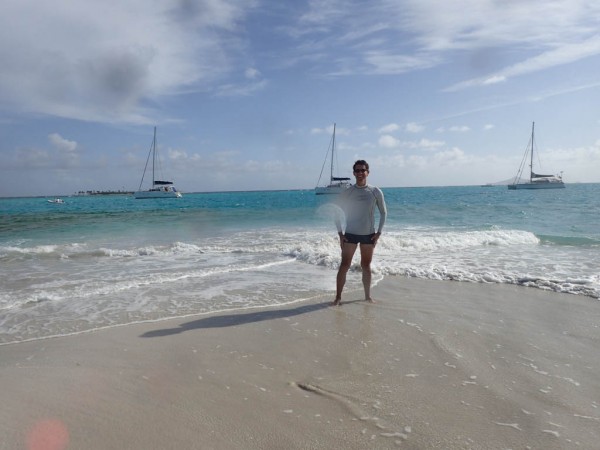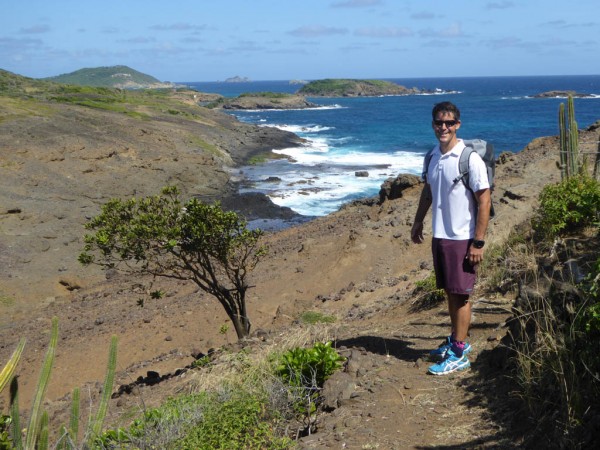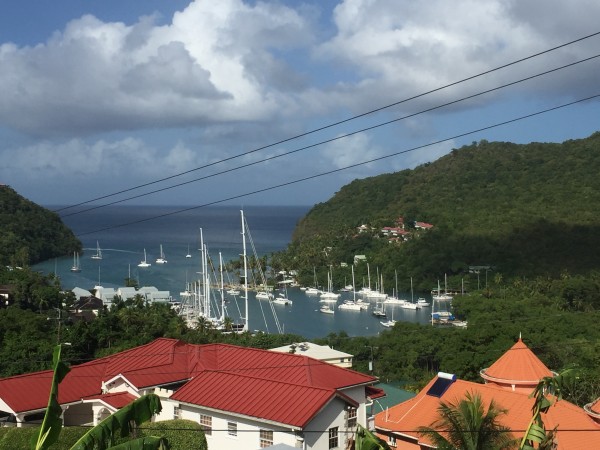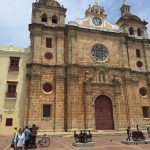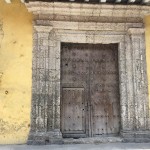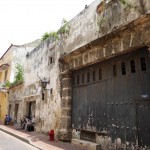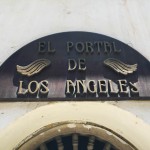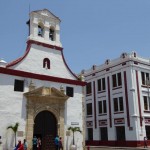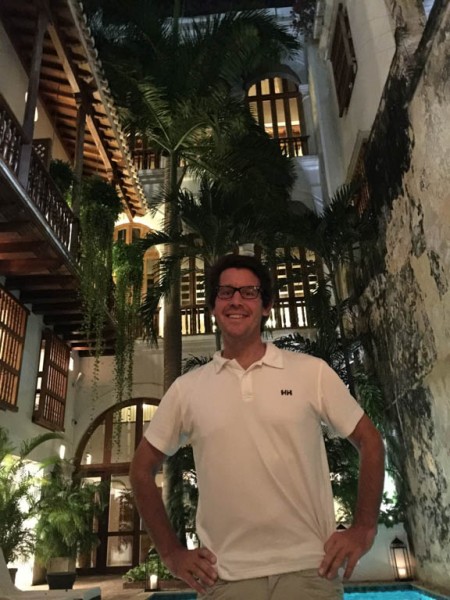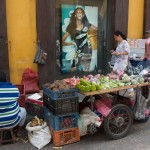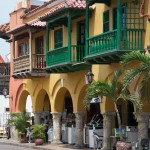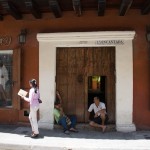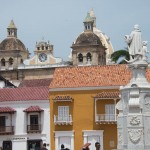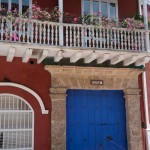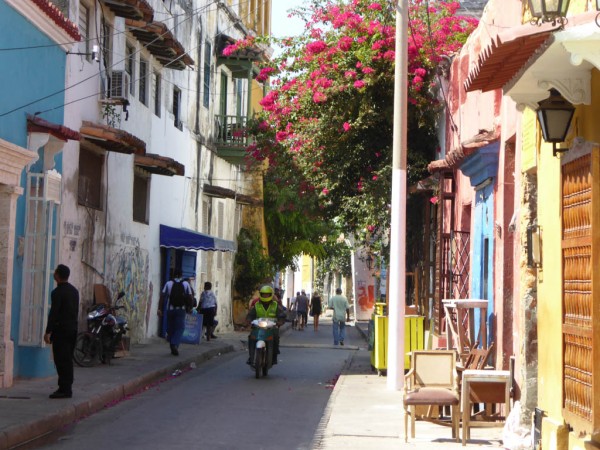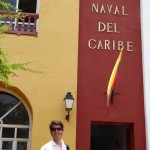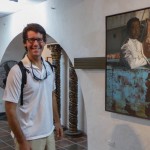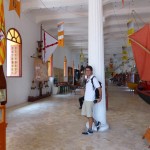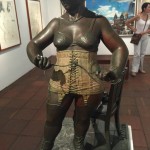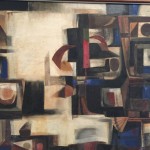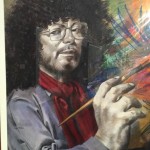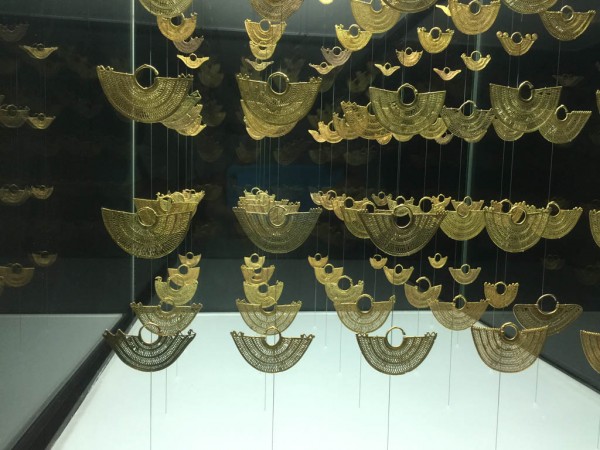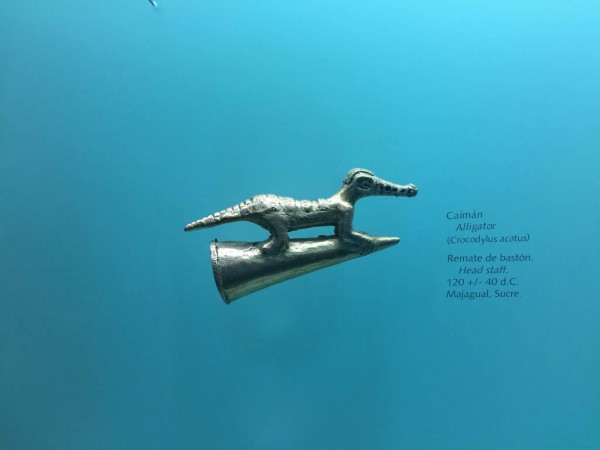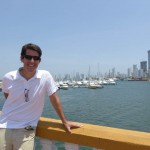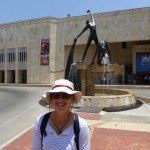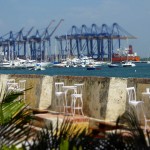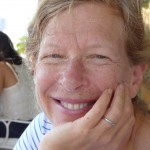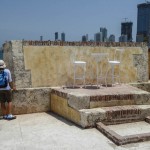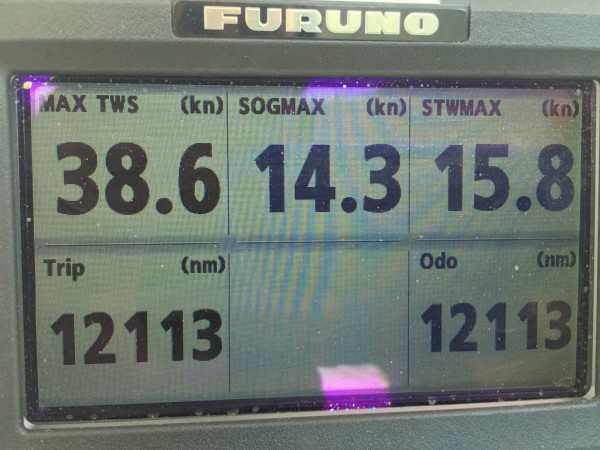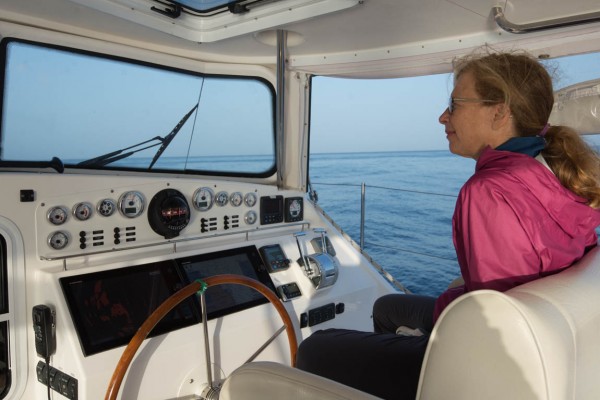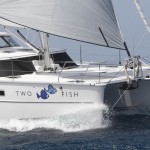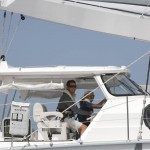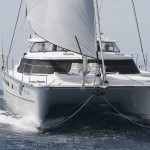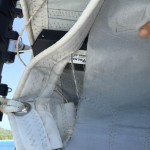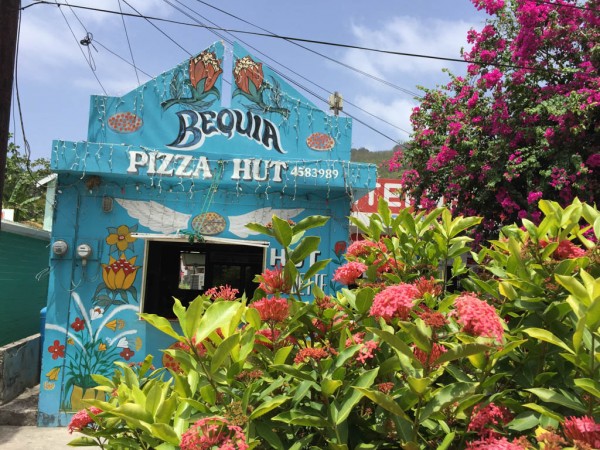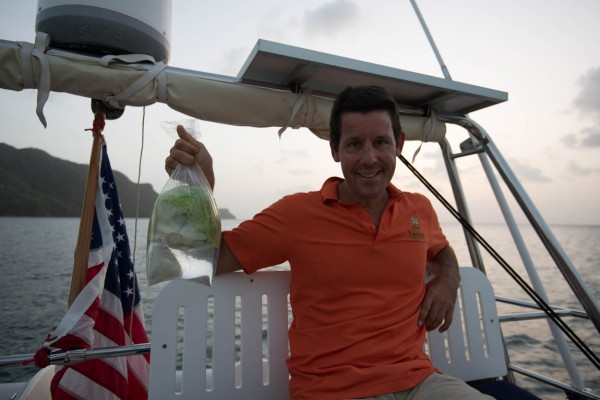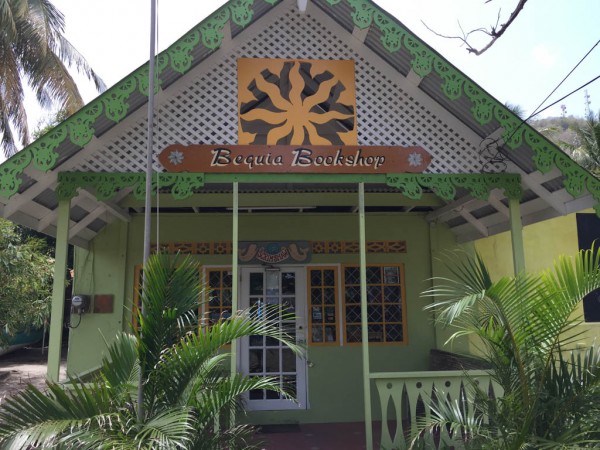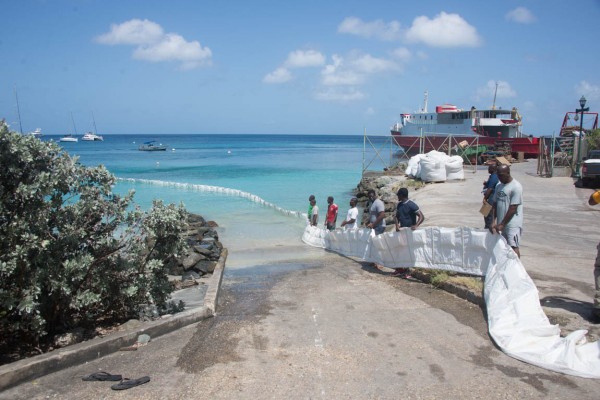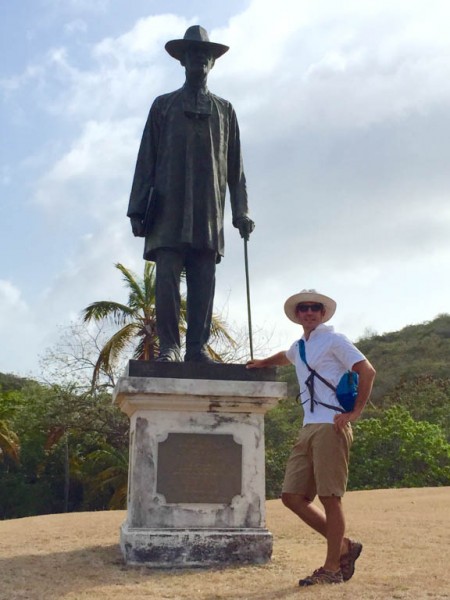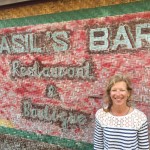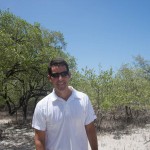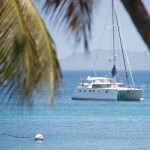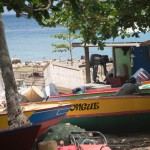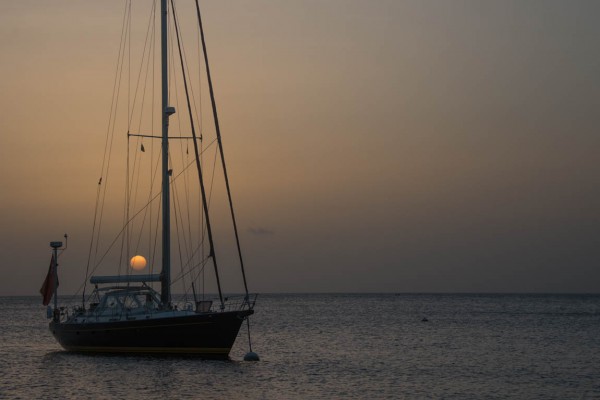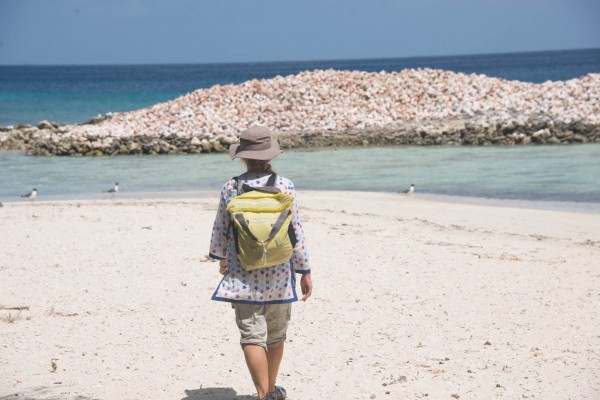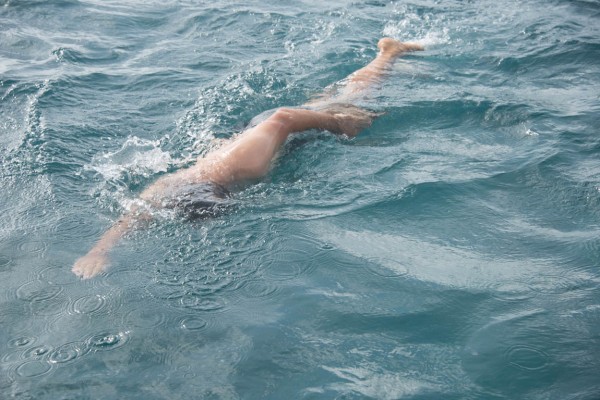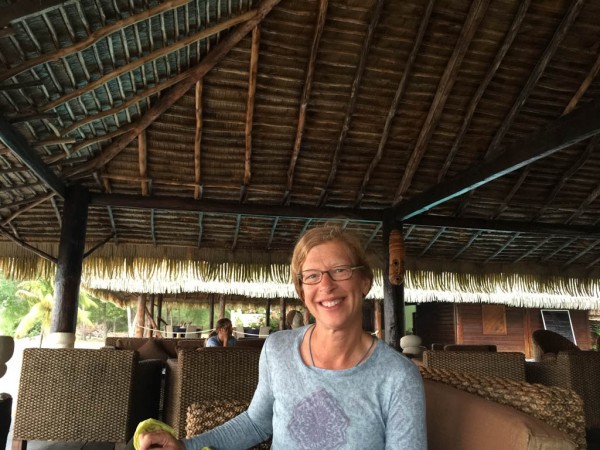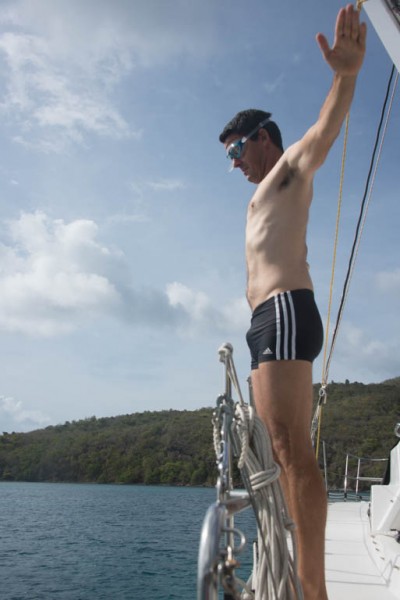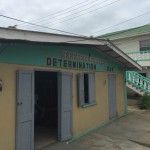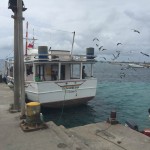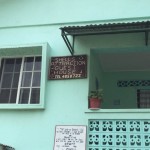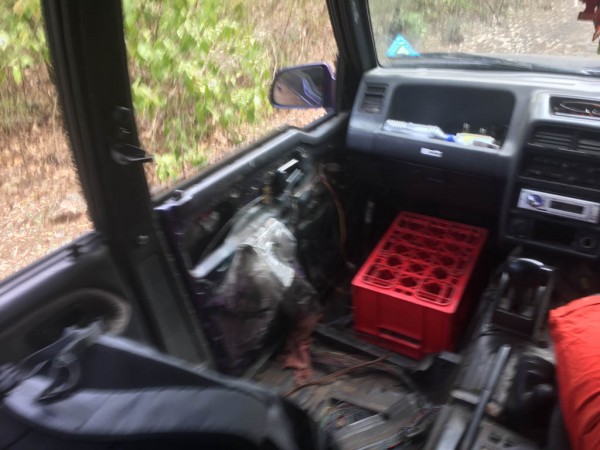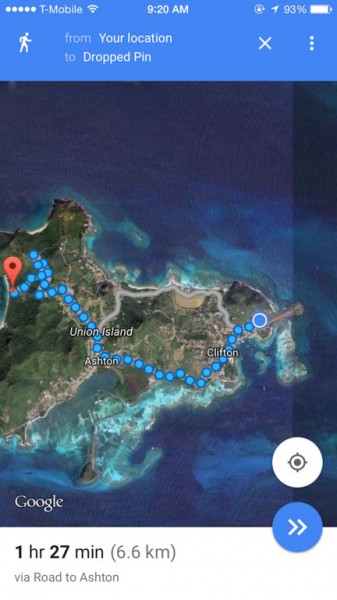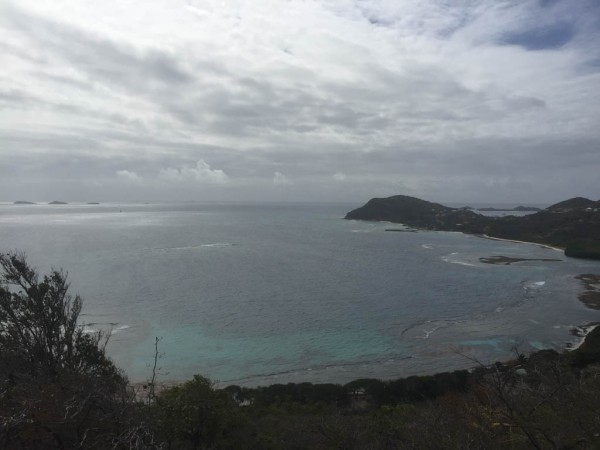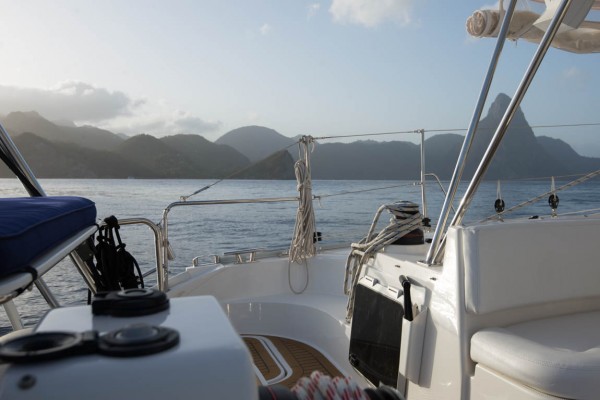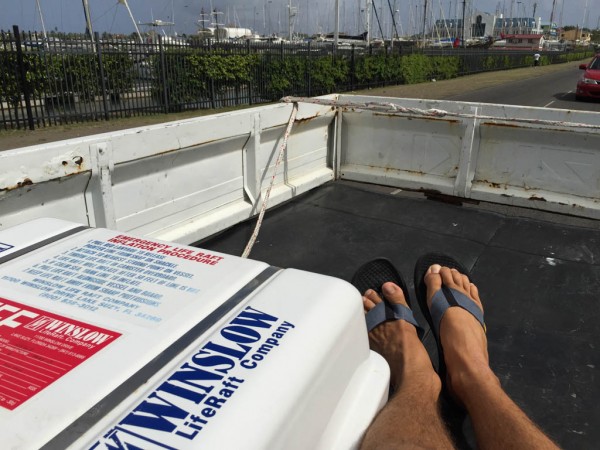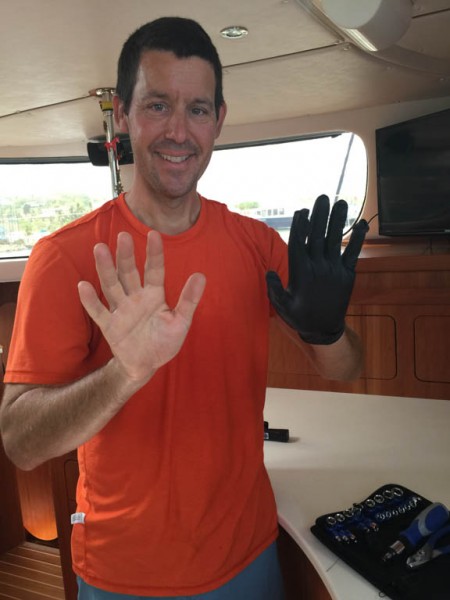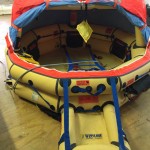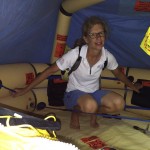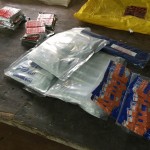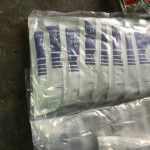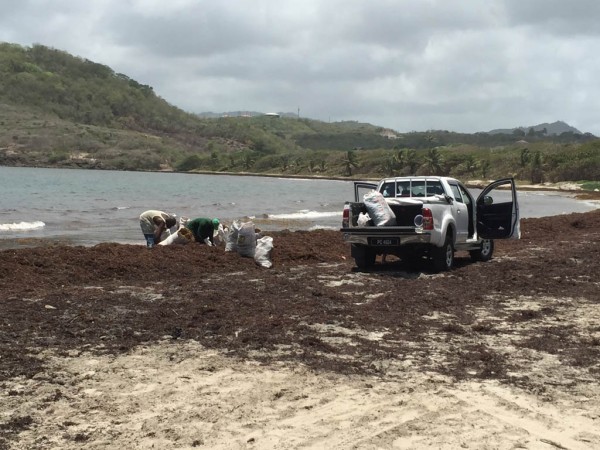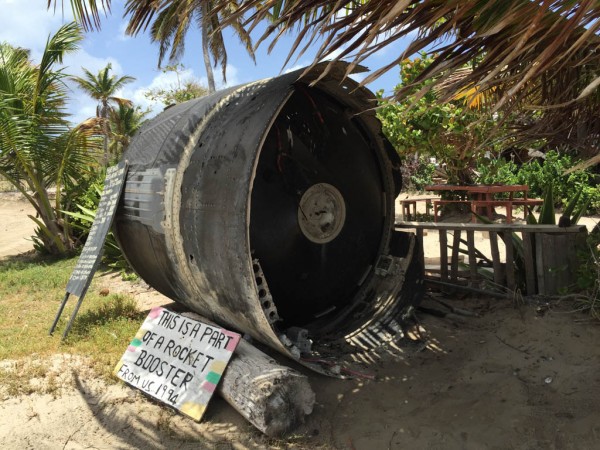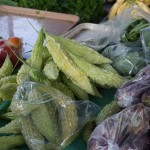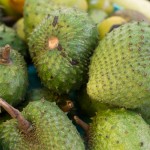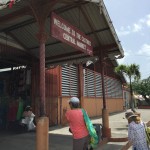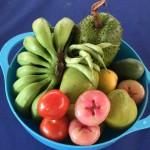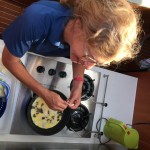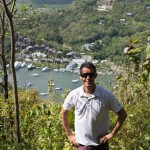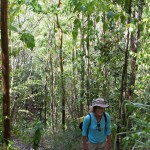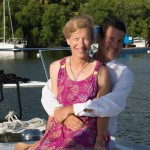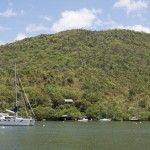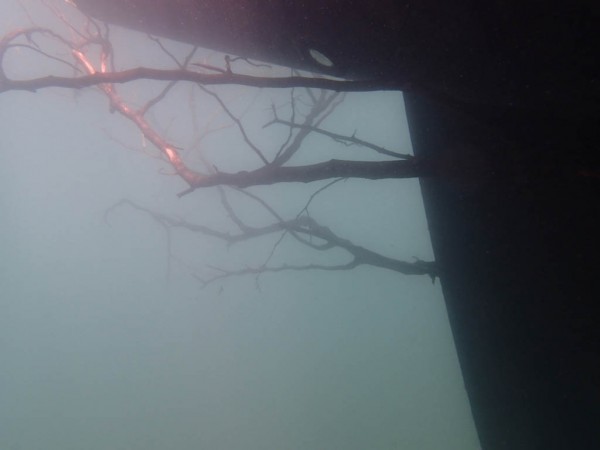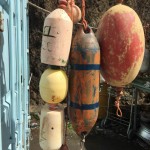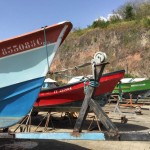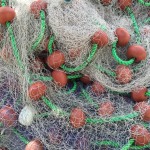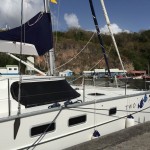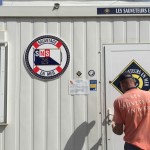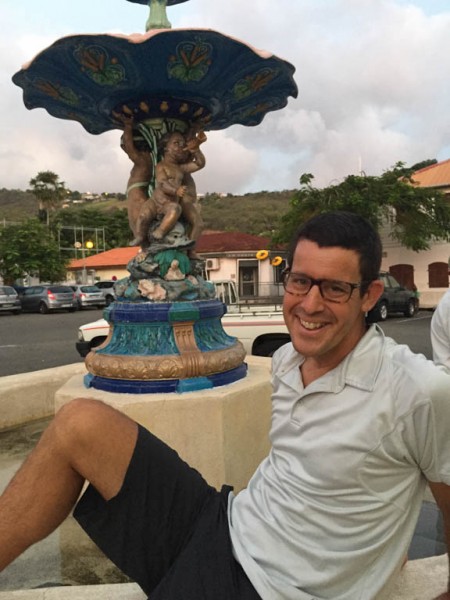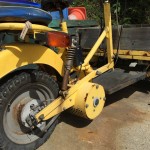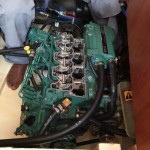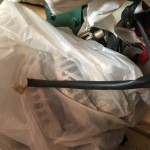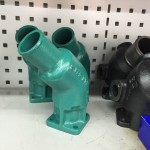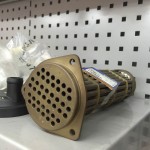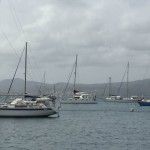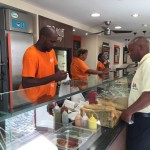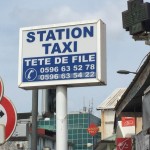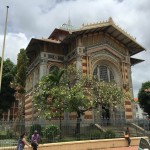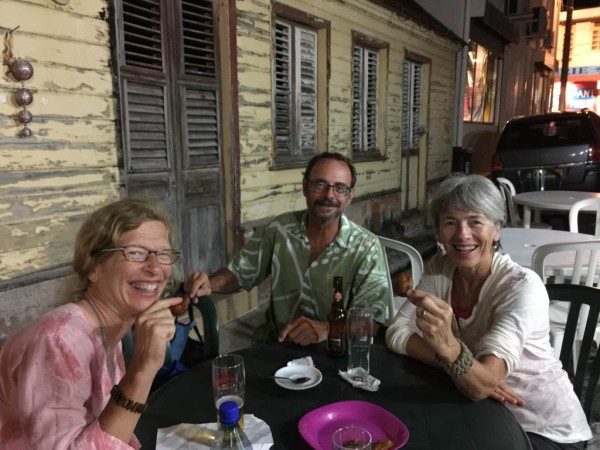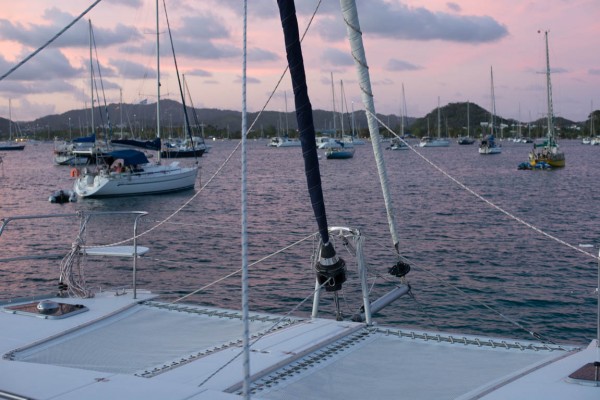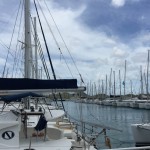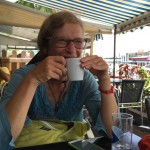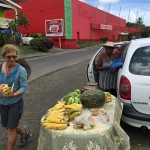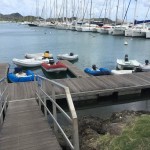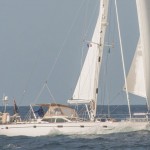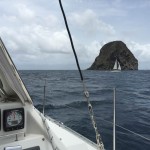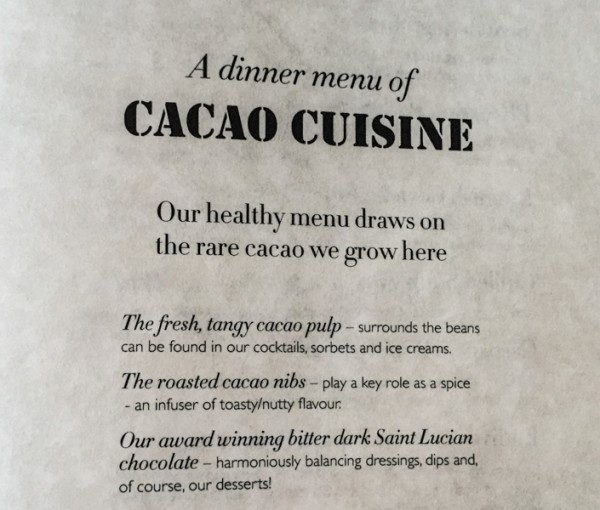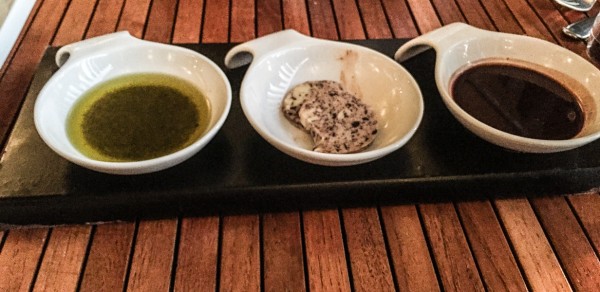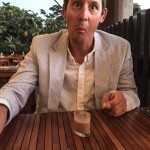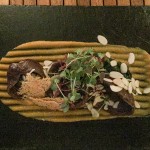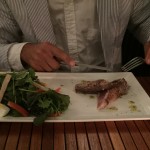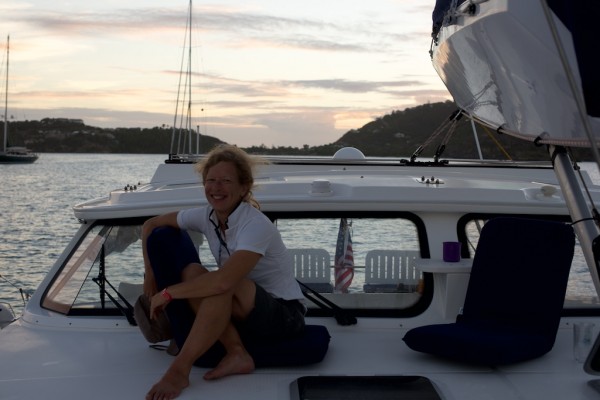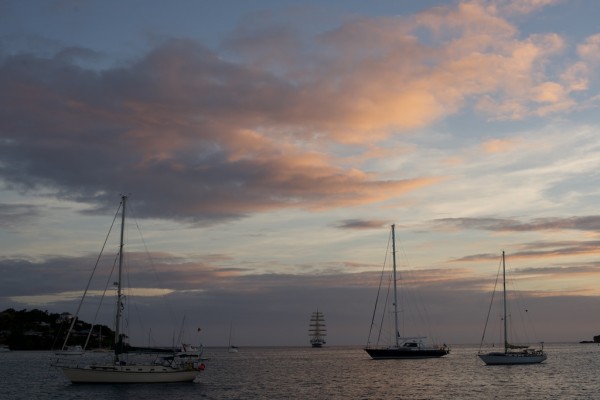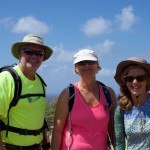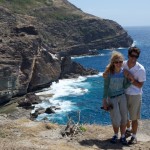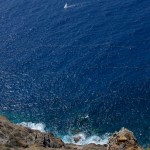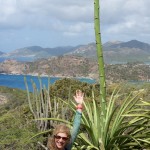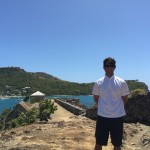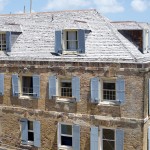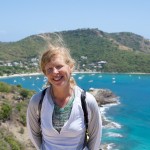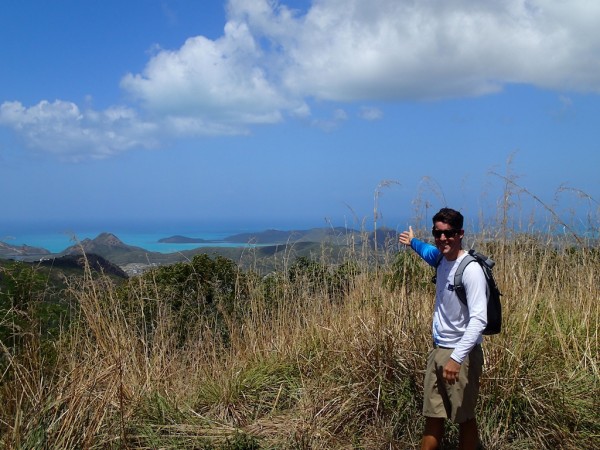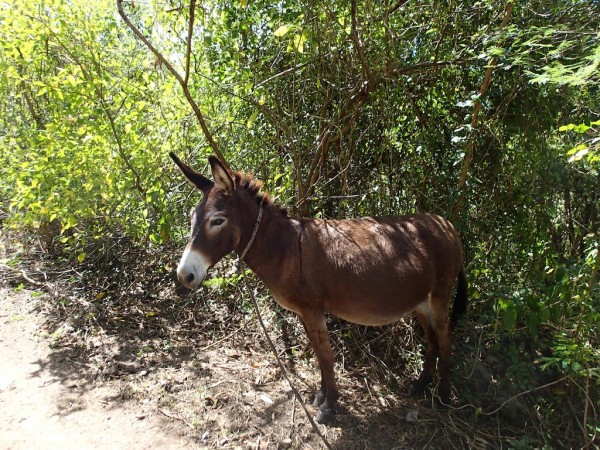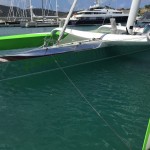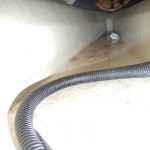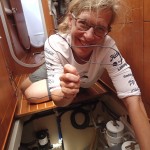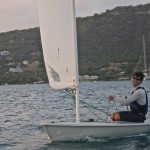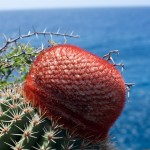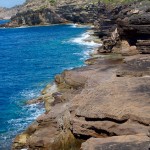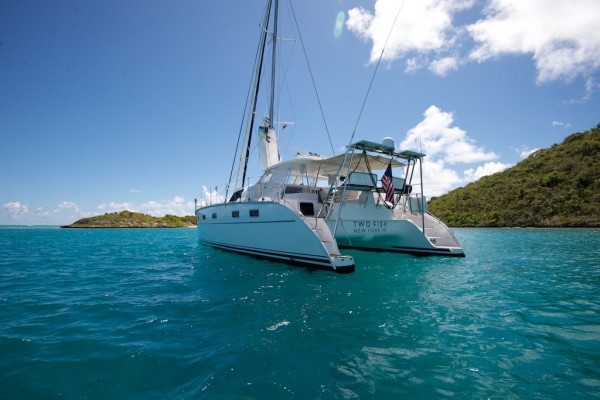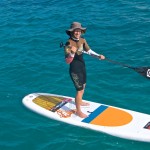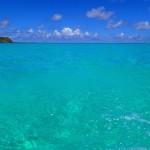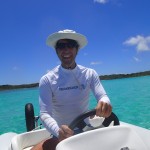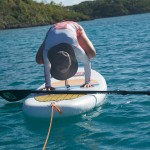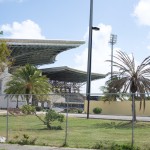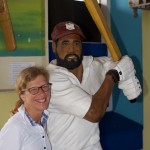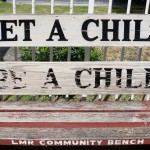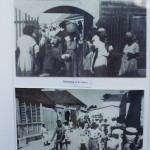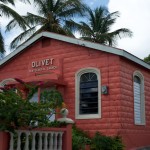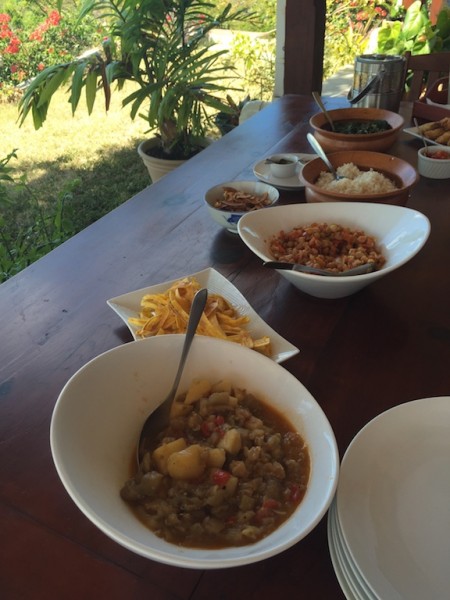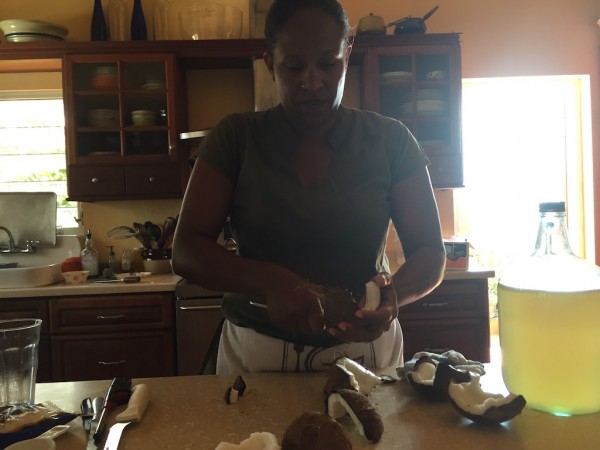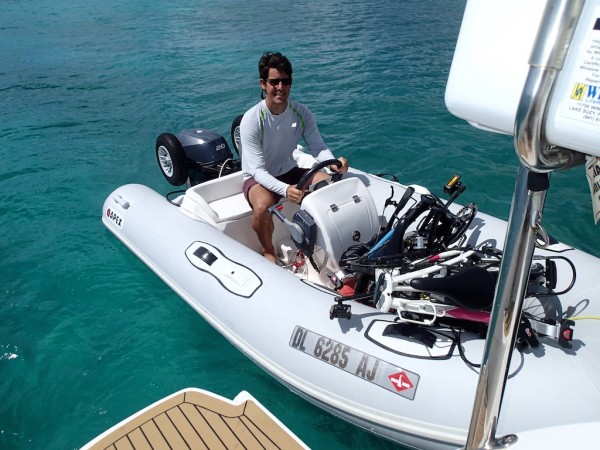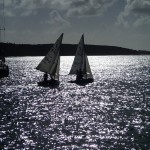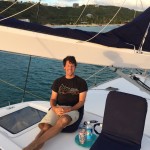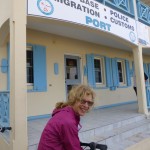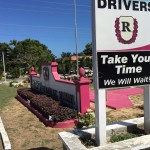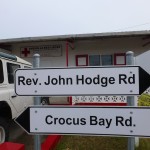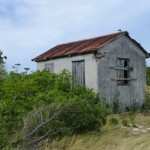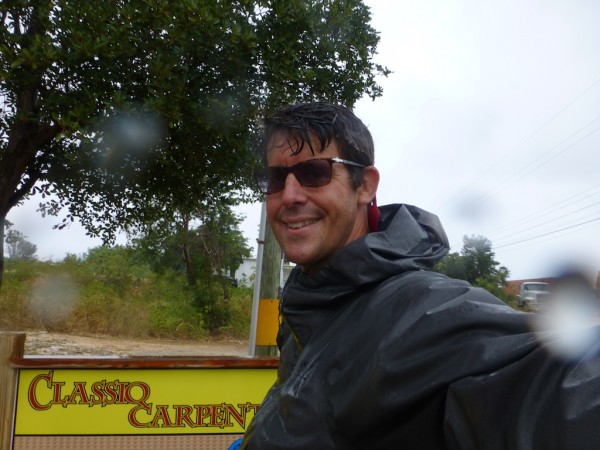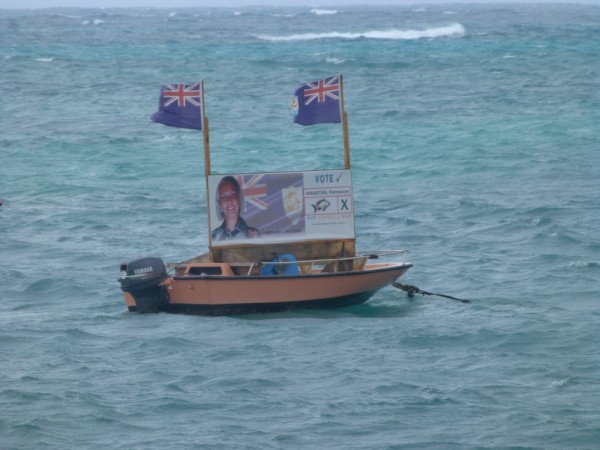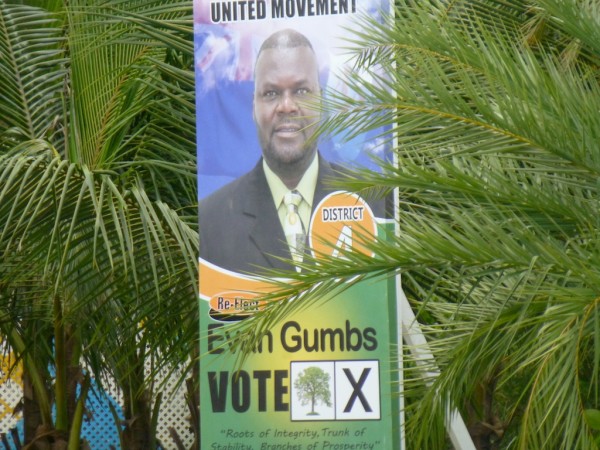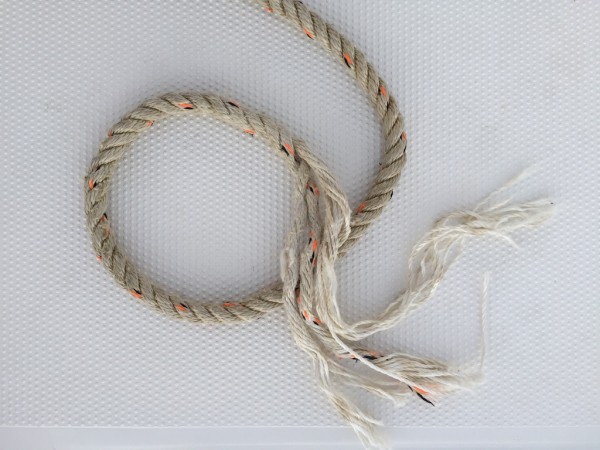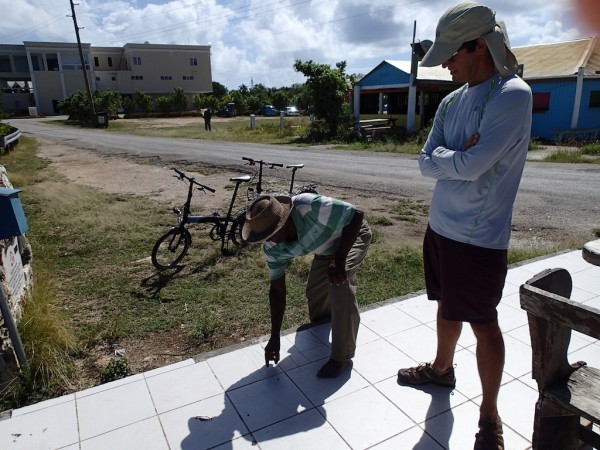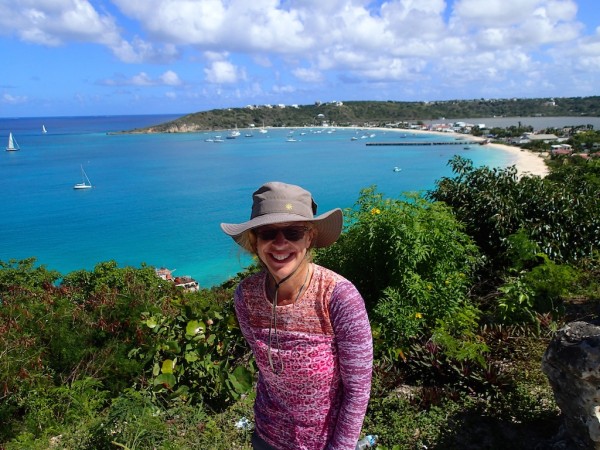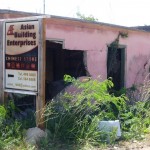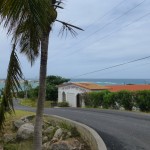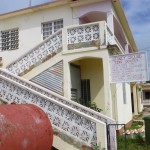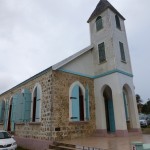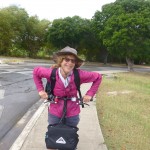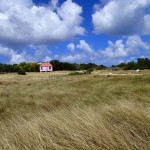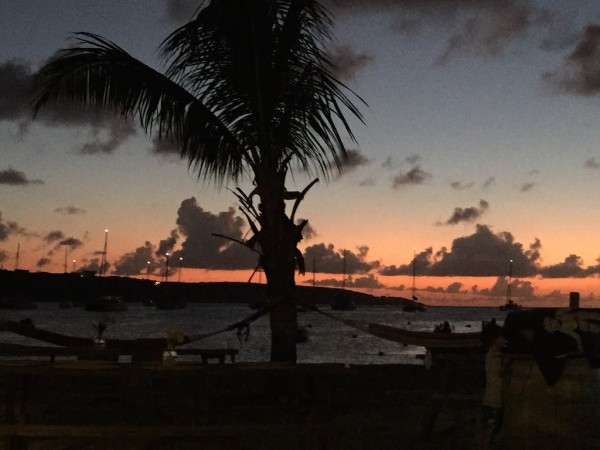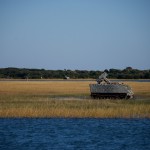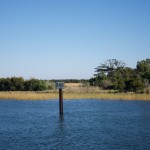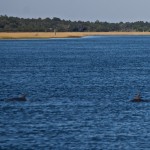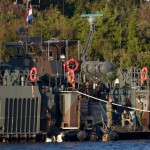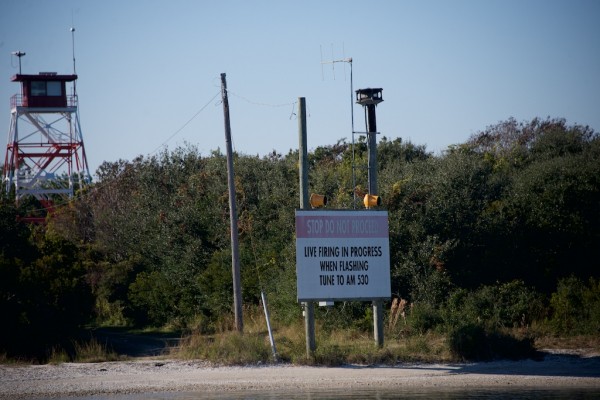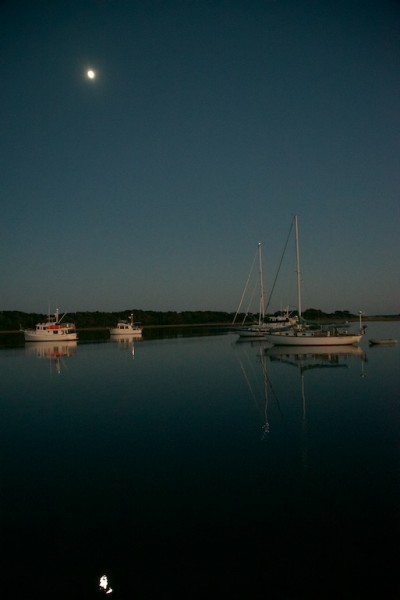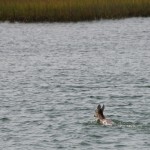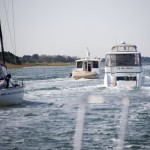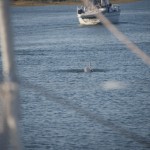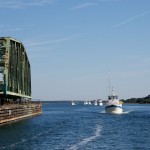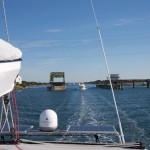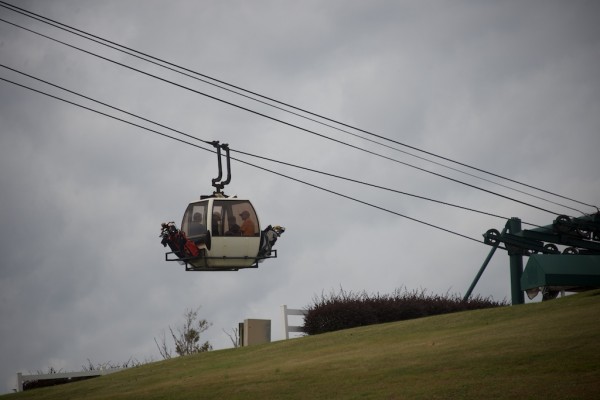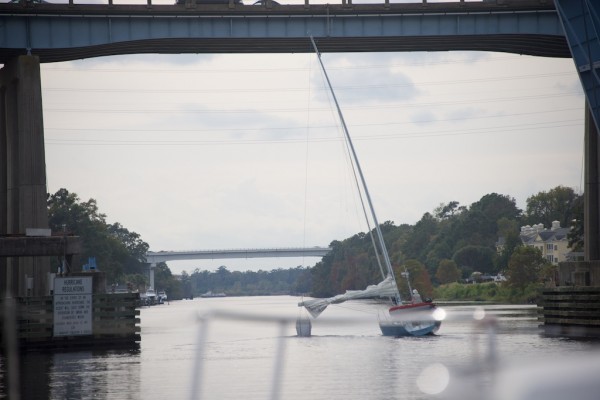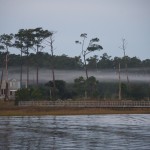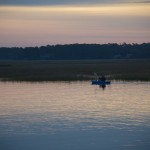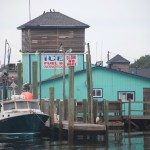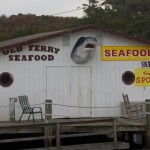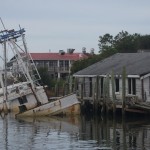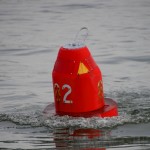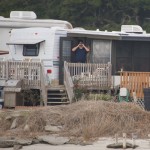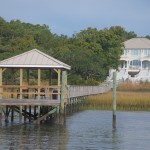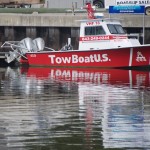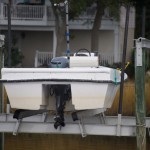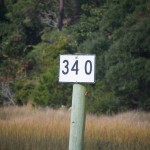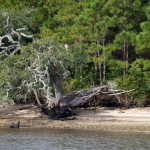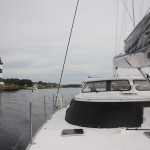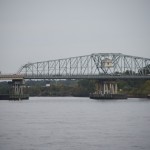You don’t need to be in Dominica for too long before you learn that it has 365 rivers, 10 varieties of bananas, that the number of rings on a coconut tree indicate its age (age=#rings/2) and that a kingfisher is actually a bird, not an Indian beer. At least those are the facts that I remember. Martin (aka Providence) filled my head with many more facts as he rowed us up the Indian River. Fortunately, he canceled the test on the return trip. Our refreshment was a coconut procured from the riverbank and split open with his machete. We took the extra coconut meat home and savored it over the next few days. I have since learned that hardened cruisers travel with their own machetes. “Real Cruisers Don’t Use Knives,” may be the title of a new guide.
-
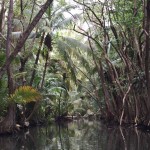
-
Indian River
-
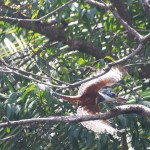
-
Kingfisher
-
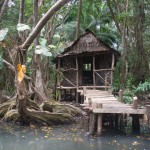
-
Built for filming of Pirates of Caribbean II
-
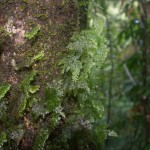
-
How many different plants
-
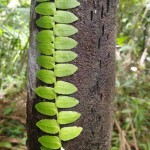
-
Sapocyte
The mountainsides are breathtaking. Every inch seems to showcase a different plant, fighting for its piece of sunshine. They don’t need to fight too hard, as the plentiful rain – over 200 or 300 inches per year, depending on how you count it – interspersed with tropical sunshine translates into lush forests and plenty of fresh fruits and vegetables. The notable missing item on our walks has been trash-not one bit. When I asked Sea Cat, he said that people respect the land and there are huge fines if you are caught.
On our Boiling Lake hike with Sea Cat (aka Octavius) we also compared the roots of the various trees, some shooting out from what seems like the middle of a tree trunk to provide extra support in the muddy ground.
-
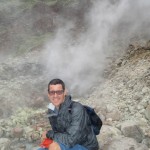
-
Upwind of Sulfur
-
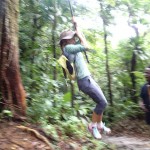
-
Vine Games
-
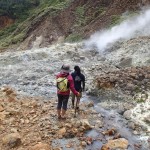
-
Into the Valley of Desolation
-
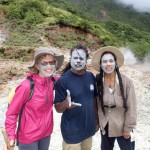
-
A day at the spa
-
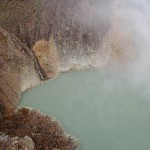
-
Boiling Lake
I tried to at least keep my shoelaces dry as we hiked to the Valley of Desolation en route to Boiling Lake, but we renamed it the Valley of Desperation as our feet sank into the fresh mud. Every time we encountered a stream, we washed off our shoes, only to be greeted at the next step with more
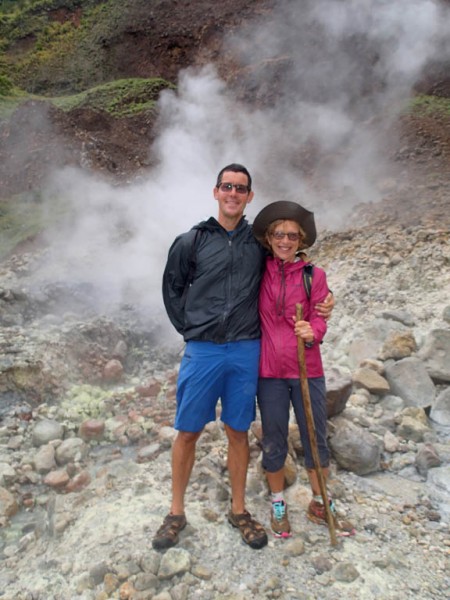
Dominican Gothic
squishy mud. It was well worth it. In the Valley, Sea Cat ran ahead and dropped some eggs in the boiling vent. Eight minutes later, we had our snack of freshly boiled eggs. It was a good follow on to the iced rum punch but the best food was yet to come. On arrival at Boiling Lake, after 4 hours of hiking, we were treated to a feast of salted fish, fresh bread, salad and fried plantains. We were stopped on our drive home by a very irate looking bull, who was tied to a post by the side of the road but had decided to wander out to block it. We were liberated by a brave (or ignorant?) pedestrian who tugged on the bull’s tether, giving the bull an alternate target to charge at. We didn’t stay to watch the end of the story.
We led our own hike up and down through
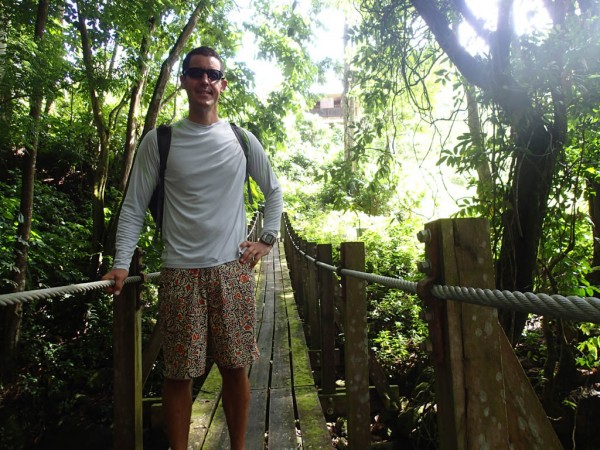
Suspension Bridge at end of hike
the muddy mountains; only one wrong turn for a pleasurable walk up a river bed and only two wipe-outs in the muddy ground by me. Upon exiting the trail, we arrived in the close-by town of Picard, notable for Ross University,
Dominica’s medical school. Every island seems to have a US accredited medical school. I had previously thought that the industry was owned by St. George’s in Grenada. (The student’s rescued by Reagan)
-
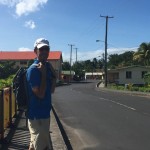
-
Setting out for Hike
-
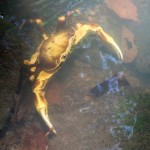
-
Crab watching us
-
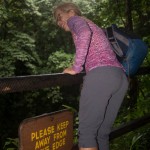
-
Follow the Rules
-
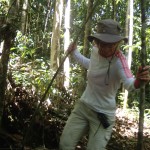
-
Useful trees on muddy trail
-
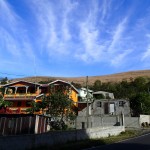
-
Picard
Our intro to the island was completed with a van tour that we shared with some charterers from the UK. At that point, they were on their second monohull as the first one had the propellor fall off. They
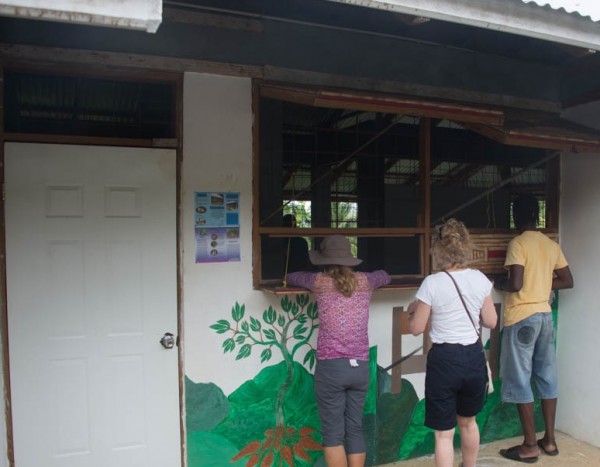
Buying Fresh Casava Bread
were finally settling in. They later emailed us an update-on the return trip their engine had caught fire. The charter company sent a third boat to Guadeloupe and they made it back to Antigua without further incident. Every so often, our guide on the tour would pull the van over, get out and tear off a bit of something growing on the side of the road. We tasted the pungent bay leaves and cinnamon tree bark. On other stops, we were expected to exit the van and explore a bit. He was very quiet, so it was always a surprise which kind of stop he was making.
-
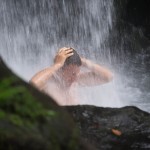
-
Jason under waterfall
-
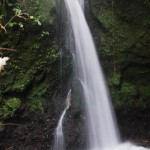
-
Emerald Pool
-
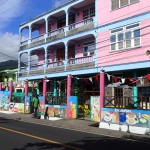
-
Main Street Portsmouth
-

-
Fishing boat coming in
-
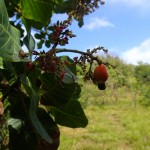
-
Caju fruit (source of cashews)
-
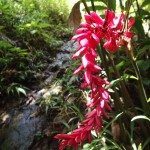
-
Dominica Flowers
-
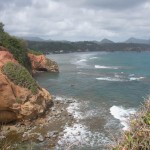
-
Coast
-
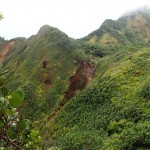
-
Green Valley
-
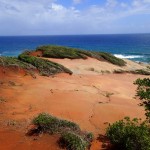
-
Towards Guadeloupe
-
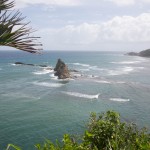
-
Northern Coast
Like many cruisers, we spent most of our time anchored in Portsmouth, as the local businessmen have created an umbrella association to provide services to cruisers. The island is not as entrenched in the tourist industry as other islands. In the BVI, cruisers
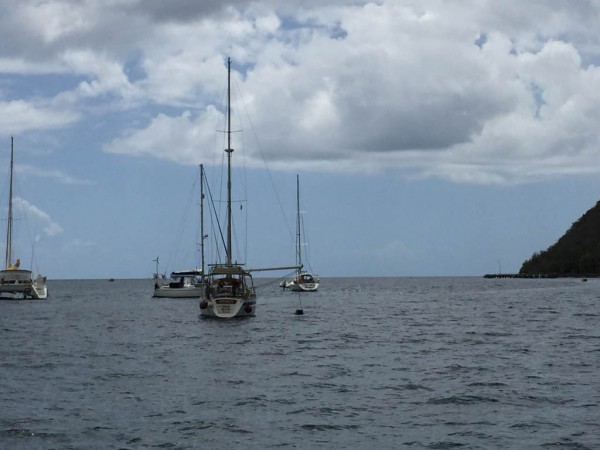
Monohull neighbor using water bucket as stabilizer
are a dime a dozen and on Antigua the holiday cottages provide the work and revenue. We were treated well but weren’t very crucial to their income.
Dominica has embraced the cruiser community and they are core to many small businesses. Many years ago, a cruising guide had given a bad review to the island, after the writer had been harassed while anchored there. Then Chris Doyle, who authors the Two Fish preferred Caribbean Cruising guides, decided to investigate it for himself. He found welcoming people and he worked with them to institute a set of services in Portsmouth and to put out a new message. Add to that the travel and food writing by Receta (Embarrassment of Mangoes and Spice Necklace), and more cruisers decided to see for themselves. Enter a google search now for cruising in Dominica and you will find blog after blog of only superlatives. Lastly, Active Captain, entered and used by cruisers worldwide has now democratized the review dissemination process so that one bad experience doesn’t carry as much weight. We were fortunate enough to overlap in our time there with both supporters of the island and to hear in person the good words they had to say.
Back to the association. Mostly, they help with setting up and leading tours and tying up to mooring balls. Each operator has a well marked fishing boat painted with distinct colors and their business or boat name. As you approach the island, one of them will motor up to you to help. Usually, if we are in a good anchoring spot, we prefer anchoring to a mooring ball. Good-intentioned mooring operators may not inspect the lines regularly and boats drifting away from their moorings are not a happy site. Here, we wanted to avail ourselves of the local services so we tied up to a ball. As is now customary on Two Fish, Jason immediately put on his scuba tank and dove the mooring, including attaching a back-up line to the concrete block.
-

-
Jason Inspecting Mooring
-
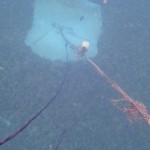
-
Note backup line
-
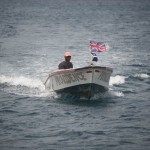
-
Martin on Providence
-
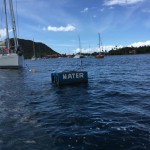
-
Portsmouth Water Hose
-
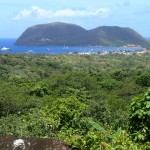
-
Portsmouth Anchorage
In Portsmouth, the local guides host a weekly cruisers BBQ, where you can feast on local fish and chicken along with the rum punch. Actually, our favorite drink on Dominica was the fresh-squeezed grapefruit juice.
Jason has often returned to the boat after a swim to inform me of the nice couple on the next boat that he has invited over for drinks. In Portsmouth, he outdid himself and invited 12 people. I guess he lost count but Two Fish can handle it. We may not have had the best provisions but the visitors forgave us and stayed for a few hours anyway.
We feasted on lots of fresh cucumbers, peppers and tomatoes, locally-caught tuna and other goodies from the weekly market. For our second breakfast, we tried the plantain sandwich – a grilled plantain stuffed with salted fish salad. Quite good.
On our final day in Dominica, we sailed to Roseau, where we tied up to one of Sea Cat’s mooring balls, aided by Marcus from the neighboring Marine Center. Did I mention that Titus helped us out in Portsmouth? Octavius, Marcus, Titus. Next time, I will try to meet more Roman-named people.
Portsmouth was also a fantastic spot for rain collection. The Antares cockpit roof has special gulleys and two stainless pipes on the end for collecting rainwater. We used quick-connects to hook up our hoses and were able to harvest at least 20 gallons. Very useful for wash-downs of scuba gear.
As we were leaving, we realized that we were in Dominica for1 ½ weeks with no boat projects! We are learning.
-
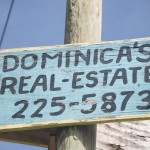
-
Buy Now
-
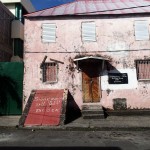
-
Downtown Roseau
-
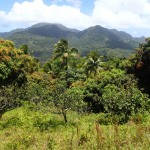
-
Typical Hillside
-
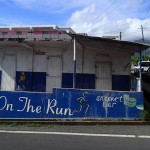
-
Ran out
